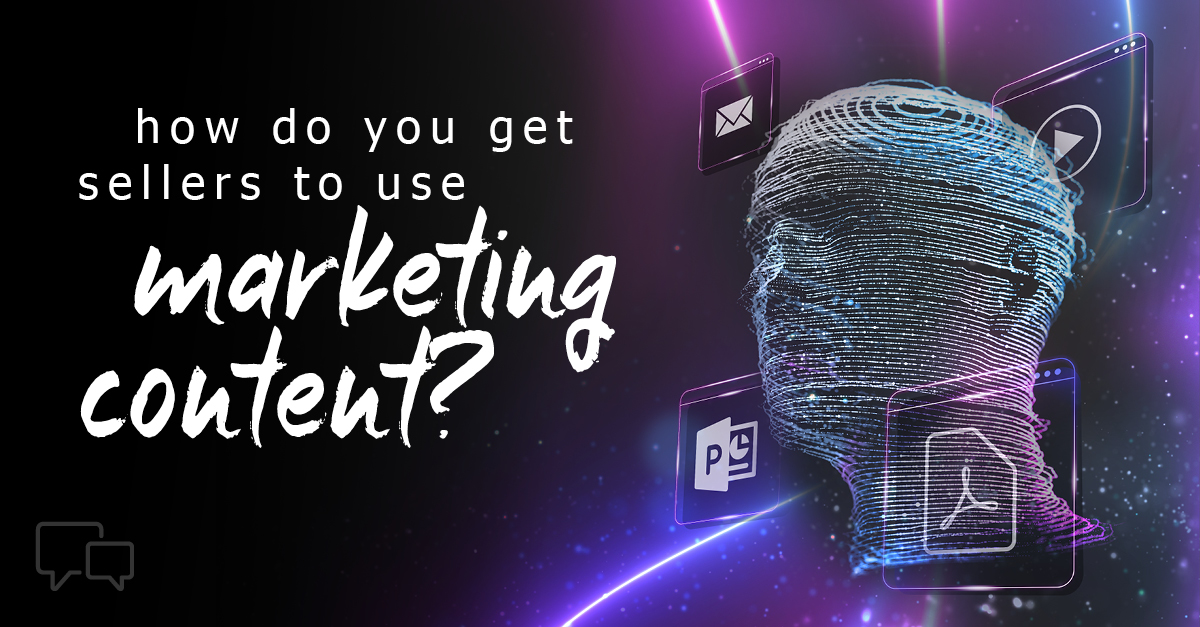
It’s an ailment that afflicts even the best revenue teams: Marketing creates content for sales, but sellers don’t use it.
Over the years, there have been countless theories about why this happens. Is the content misaligned with sellers’ needs? Is marketing’s message fundamentally flawed?
The rallying cry of “sales and marketing alignment” still reverberates as a best practice from nearly 20 years ago. Yet, for all the proposed solutions to collaboration challenges, organizations continue to struggle to get sellers to use the content that marketing provides.
Sellers and marketers have more access to shared customer data than ever before. Enablement platforms such as Allego and others give sellers easier access to content and training in the moments they need it most.
So, what’s really going on?
Emblaze recently partnered with Allego to learn the answer. Working with an enterprise-level sales organization, we conducted a behavioral research study of sellers’ willingness to use a new piece of marketing collateral.
Presenting Marketing Content in Three Ways
For the study, we worked with over 300 sellers from 11 different regions at a large capital equipment company in the healthcare industry. Sellers split into nine groups and watched a recorded video of a sales manager, a product marketer, or a high-performing seller introduce a new piece of marketing collateral.
Each group watched one of three different presenters share the content using one of three different story methods. Every presenter followed the same scripts and used the same piece of content.
The data revealed two interesting findings:
- Sellers were much more likely to use content when they learned about it from a high-performing peer vs. a sales leader or marketer.
- Sellers were significantly more likely to use content after watching a high-performing peer provide basic details and demonstrate how to use the content in a customer conversation, as opposed to only providing basic details about the asset or including a case study.
Two Science-Backed Ways to Get Sales to Use Your Content
Here are two science-backed ways to motivate your sellers to use your content.
1. Recruit a High-Performing Seller
Overall, learning about new content from a high-performing peer led to much higher use intentions from sellers. And despite being a subject matter expert, the product marketing manager had the least impact on use intentions.
Some results varied based on the sellers’ levels of experience and performance. Less experienced reps, for example, were significantly more likely to use the content after watching the senior sales leader.
Experienced sellers were more skeptical. They had lower-than-average use intentions after hearing from the sales leader or product manager. Interestingly, underperforming sellers were significantly more influenced by their high- performing peer.
2. Demonstrate the Conversation
When asked about the different approaches, sellers indicated that they would be less willing to use the content after hearing only basic details about it.
Sellers also felt differently about seeing the case study vs. a demonstration of the content, depending on which presenter delivered it.
Overall, sellers were significantly more likely to use the content after watching a role-play demonstration from a high-performing peer. Recruiting an all-star seller to demonstrate a buying conversation will have the best results.
However, if a sales leader or product marketing manager presents the content, using a customer case study is more likely to motivate sellers to use it.
Interestingly, the simulated role-play was the least effective method for sales leaders, showing worse results than presenting only the basic details of the content. This could be because sellers trust the example more when it’s demonstrated by a colleague who they know has been successful—not an executive or product marketing manager.
Motivate Your Sellers to Use Your Content
All the effort your marketers put into crafting the most persuasive collateral gets wasted if you can’t persuade your sellers to use it. Worse yet, when sellers don’t use what marketing provides, they often spend hours every week recreating their own content to use in customer conversations.
The results of this research show that even if you start with identical content, the presenter you choose—and the story they tell—significantly affects your sellers’ willingness to use it.
Get our full research report, Getting Sellers Engaged, to dig deeper into the results of this study and see what else you can do to motivate your sellers to use new content.
A version of this article originally appeared in Selling Power magazine.





